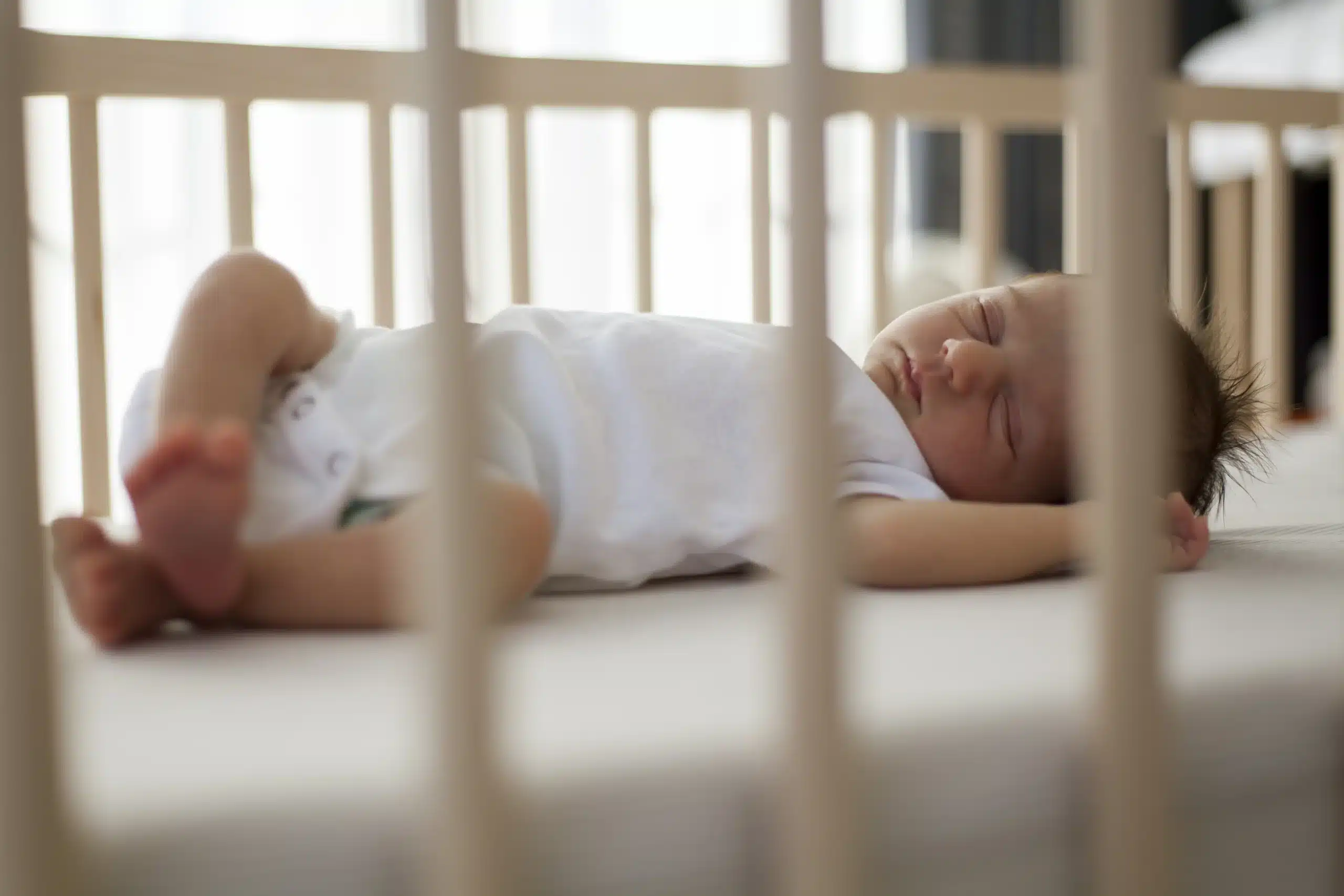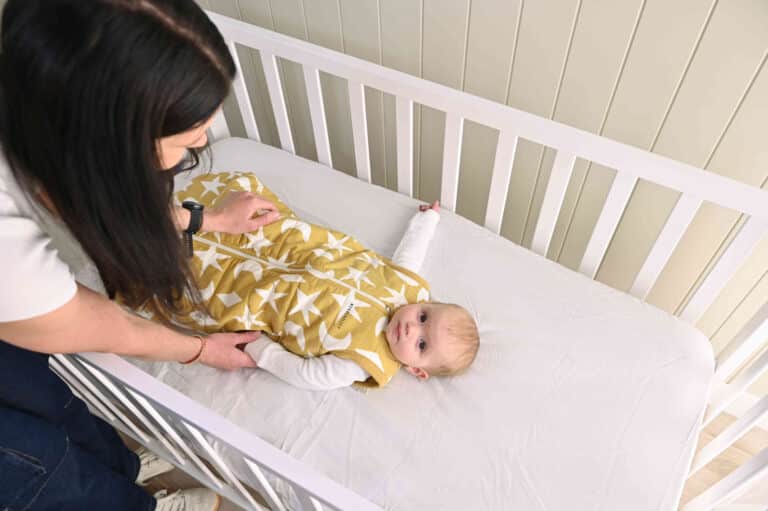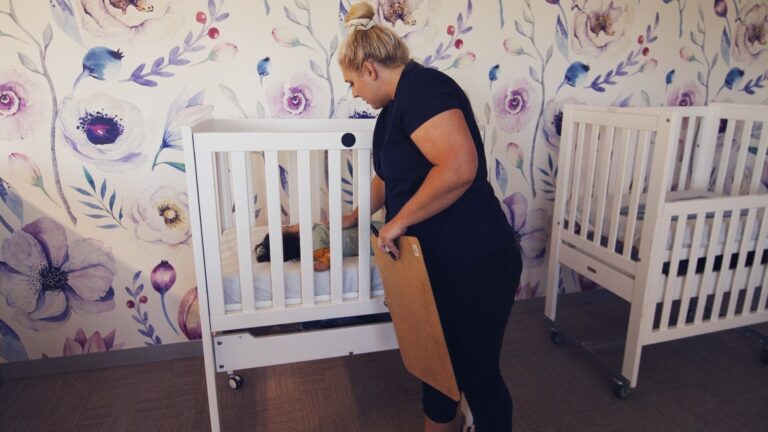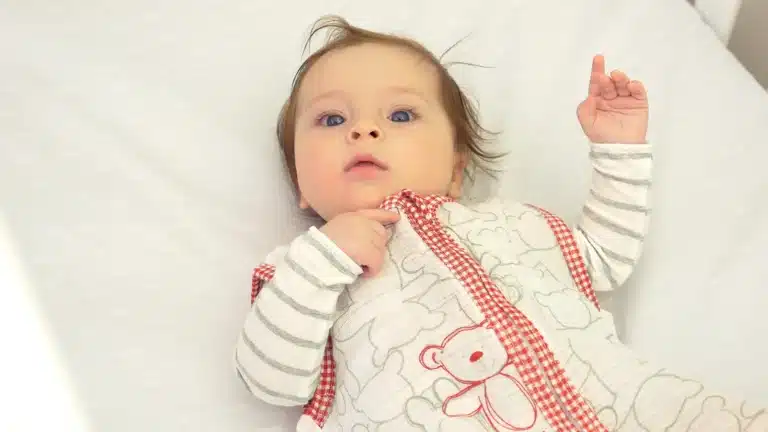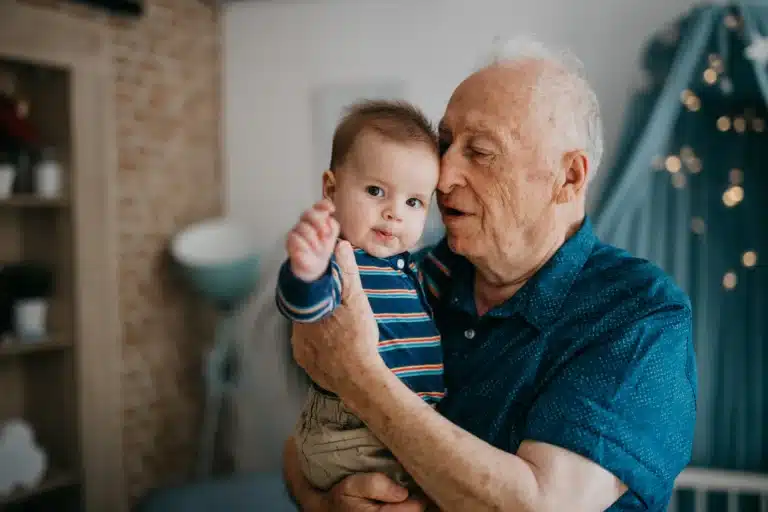Babies in the NICU or Special Care Nursery are often placed or slept in ways that don’t follow the Red Nose safe sleep recommendations. While they are in these wards they are in the care of medical specialists and under constant care and review of the nursing team.
What Do You Do When You Bring Your Baby Home?
Sleeping Baby at Home After Hospital – A Case Study
Claire’s son Jack* was born prematurely – after six weeks in NICU for breathing difficulties, he finally came home. During Jack’s stay in NICU, Claire* was surprised that Jack was often slept on his tummy by the NICU nurses.
When I arrived one morning, I found Jack sleeping peacefully on his tummy, in nothing but a nappy and a little hat. He was surrounded by blankets that were cocooning him in what looked like a nest. And I thought to myself, isn’t that unsafe?
The NICU team was terrific – they explained that they were trying to work out what was wrong with Jack. They explained that babies who are in NICU are often slept on their front or sides to help with their breathing and to prevent muscle problems particularly in the hips and neck. They went on to explain that sleeping in various positions when sick and small also helps with development of their muscles, keeps them comfortable and reduces stress. They reassured me that these practices were safe in the NICU ward because there is constant monitoring of babies– once Jack was well enough to go home, we would need to follow the safe sleeping recommendations.
The good thing was the nurses guided us through how to sleep Jack safely on his back at home which made it easier. He is now a cheeky, active, very verbal two-year old, who you would never know had been so unwell that he needed 24-hour care in the NICU.
Premature babies, and those who are acutely unwell in hospital, need to be cared for differently to other babies. Being small and unwell, babies are more sensitive to the effects outside the womb, particularly gravity when placed flat on a firm surface for prolonged periods. If they are not nested and nursed in this way, they are more likely to have impact on their future development.
It is important to remember that each situation is clinically different. Whether the baby is in the NICU, SCN, or at home, parents and caregivers need to use safe sleep techniques appropriate to their baby.
When the baby is well enough to leave the hospital and sleep at home, it is important to follow the Red Nose six safe sleep recommendations. Together, this will help baby have a safer sleep and help reduce the risk of sudden infant death.
*Names have been changed for privacy

Did you find this helpful?
Good job! Please give your positive feedback
How could we improve this post? Please Help us.
